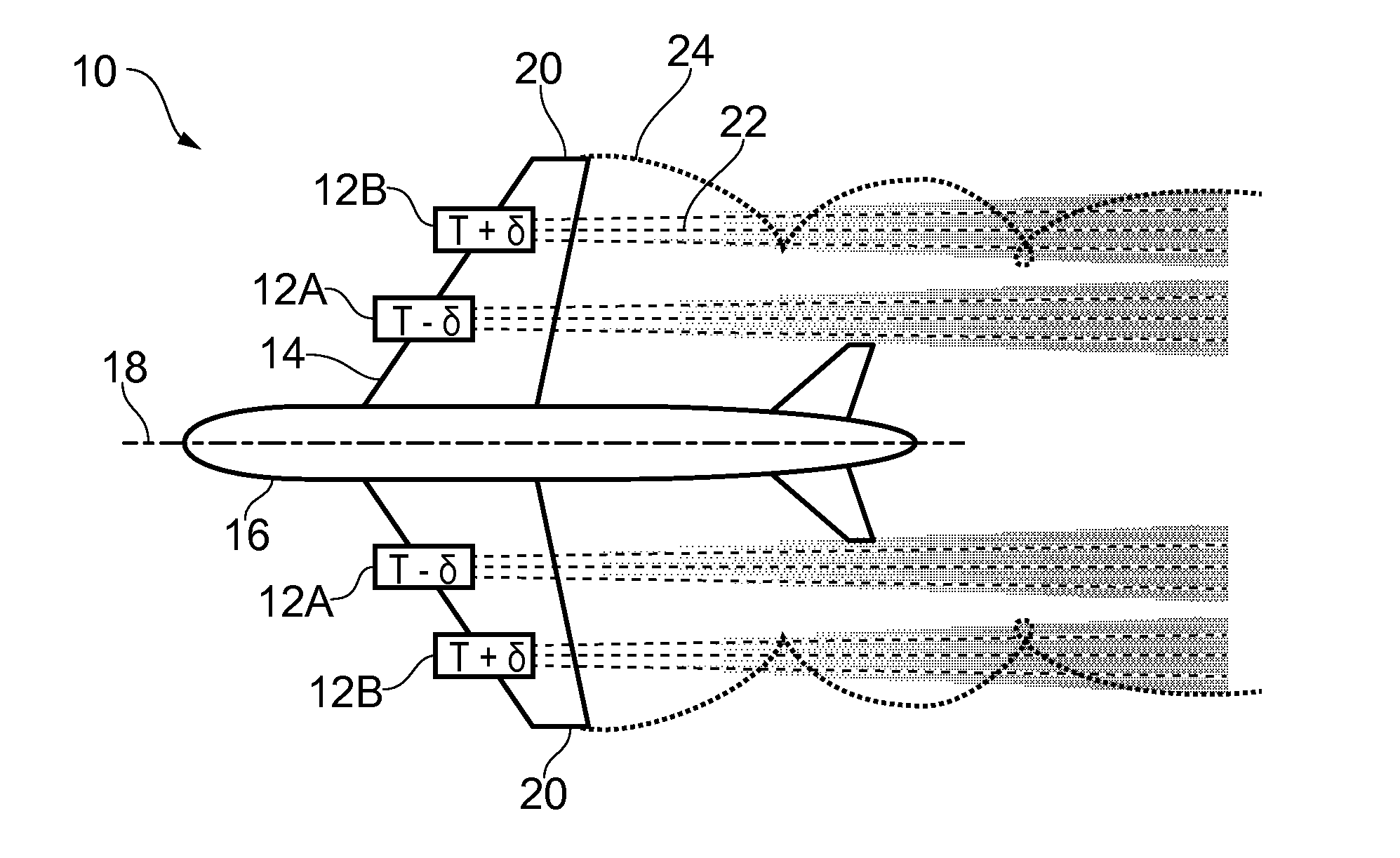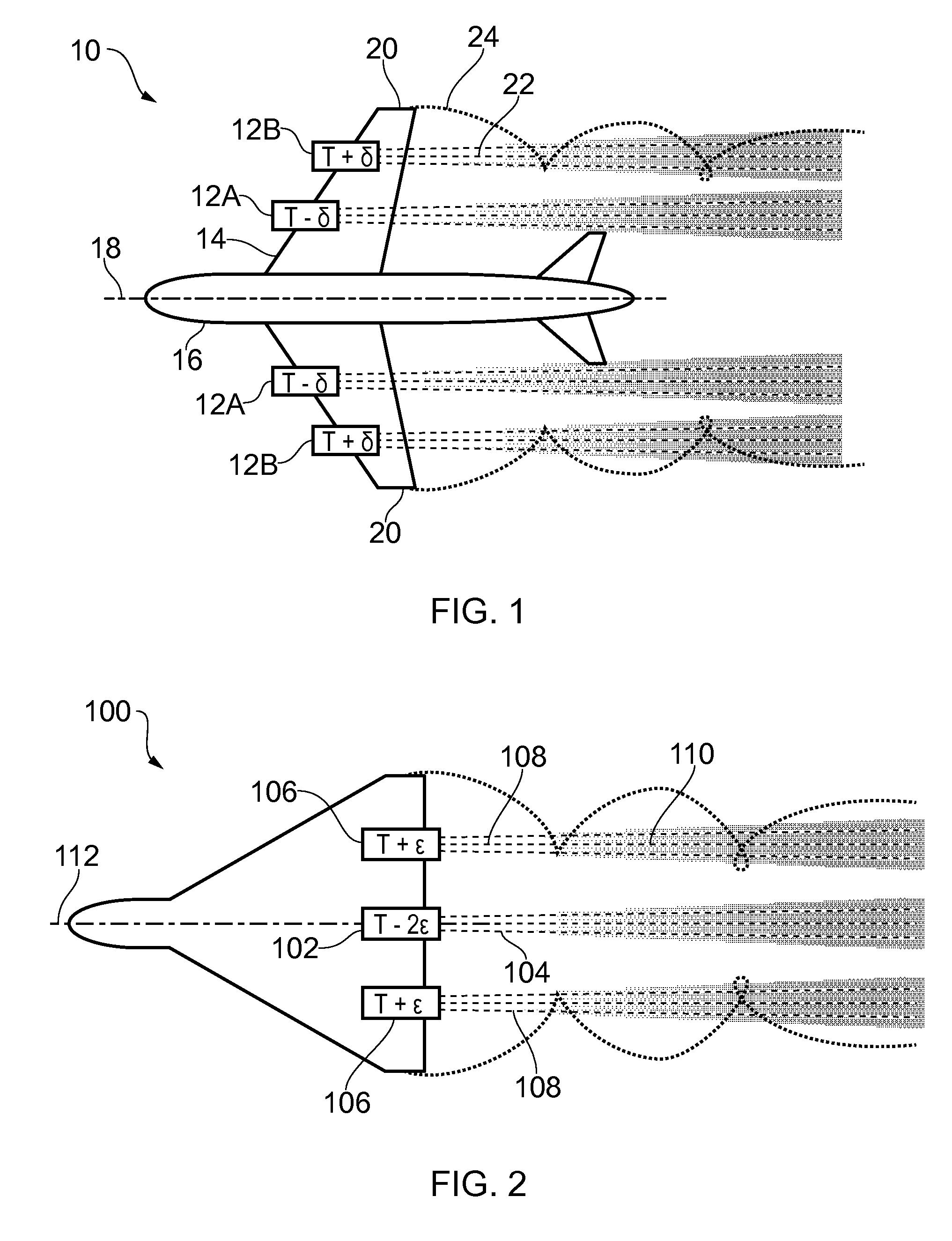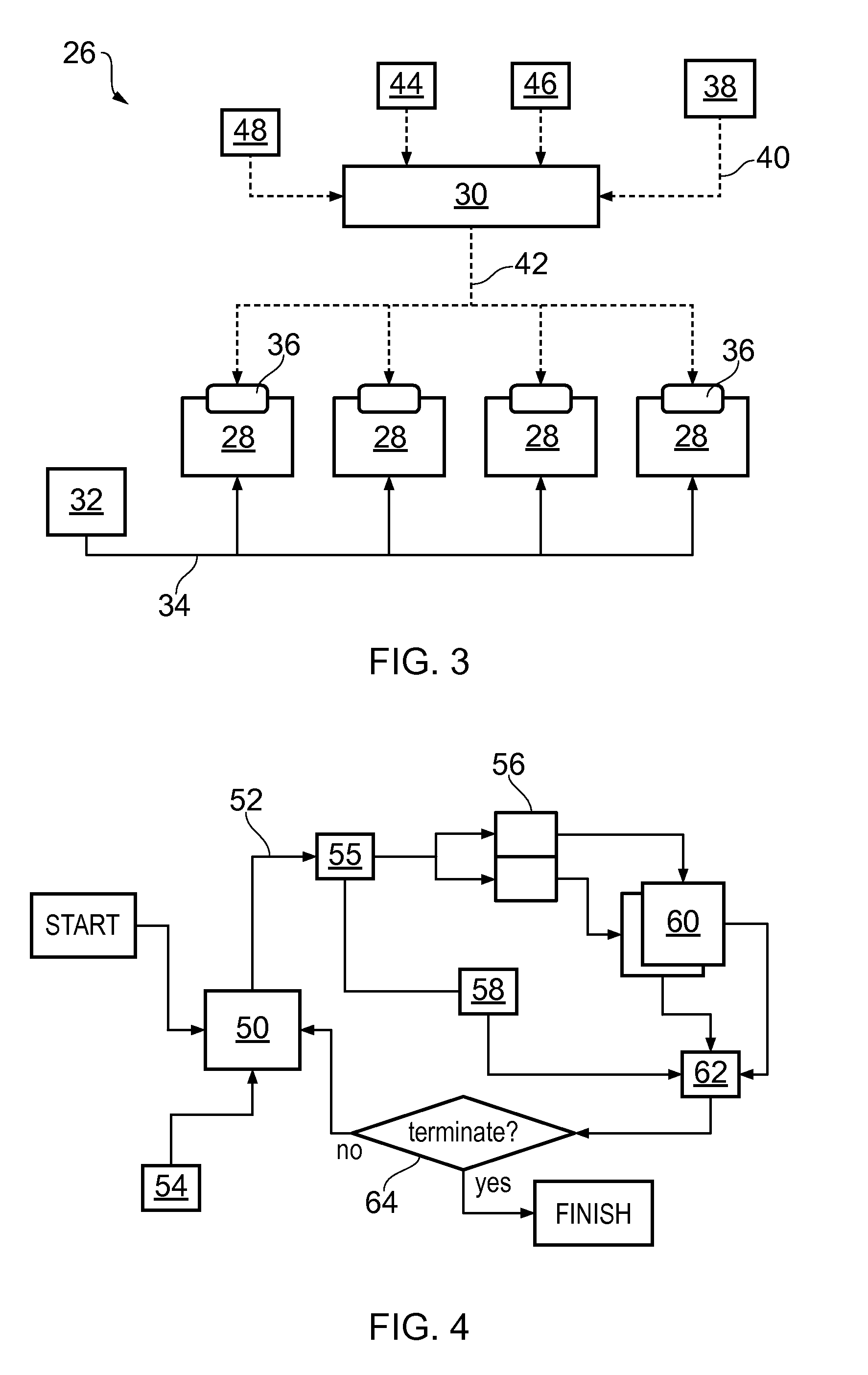Aircraft vapour trail control system
a control system and vapour trail technology, applied in the direction of efficient propulsion technologies, machines/engines, instruments, etc., can solve the problems of increasing fuel burn, reduce the efficiency of one or more engines, reduce the range of ambient conditions, and weaken the
- Summary
- Abstract
- Description
- Claims
- Application Information
AI Technical Summary
Benefits of technology
Problems solved by technology
Method used
Image
Examples
Embodiment Construction
[0056]During operation of an aircraft engine, contrail formation can occur as engine exhaust gases mix with ambient air. The number density of condensation nuclei in the engine exhaust plume will influence the size distribution of ice crystals in the young contrail. Specifically, the greater the number density of condensation nuclei then the smaller will be the initial size of formed ice crystals (and the greater will be the optical depth of the contrail at that point). The persistence of a contrail once formed is influenced by ambient conditions, and, in particular the level of ice saturation of ambient air.
[0057]The term ‘mitigation’ is used herein to refer to the suppression of contrail formation and / or the advantageous modification of one or more contrail characteristic, for example contrail optical depth.
[0058]In essence, this invention achieves a contrail mitigation effect by selectively altering the exhaust emissions of each engine according to proximity to flow phenomena cau...
PUM
 Login to View More
Login to View More Abstract
Description
Claims
Application Information
 Login to View More
Login to View More - R&D
- Intellectual Property
- Life Sciences
- Materials
- Tech Scout
- Unparalleled Data Quality
- Higher Quality Content
- 60% Fewer Hallucinations
Browse by: Latest US Patents, China's latest patents, Technical Efficacy Thesaurus, Application Domain, Technology Topic, Popular Technical Reports.
© 2025 PatSnap. All rights reserved.Legal|Privacy policy|Modern Slavery Act Transparency Statement|Sitemap|About US| Contact US: help@patsnap.com



